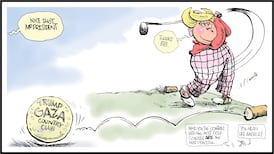The face of Ireland has changed irrevocably. There are now some 166 nationalities in the Republic, most living in urban centres, others tucked away in towns and villages around the State.
The overwhelming majority are legal migrant workers and professionals serving us in our supermarkets, hospitals, restaurants and pubs. Contrary to public perception, only a minority are asylum-seekers. And with lower birth rates and increasing life expectancy in Ireland, many of these migrants will pay our pensions in years to come.
The New Irish, a major ten-part series which concludes in this newspaper today, reflects some of these realities. The principal demographic results of the 2002 census, published last year, show that non-Irish nationals account for just under six per cent of the population. This was the first occasion on which a question was asked on nationality.
The changes in the cultural composition of the State have been driven largely by the Government, employers and State agencies, actively recruiting abroad for workers to meet skills and labour shortages at home. There has been more than a six-fold increase in the number of work permits issued between 1999 and last year, from 6,000 to 40,000 respectively. There is little evidence to suggest there is an unmanageable flood of migrants or asylum-seekers into the country. Asylum-seekers account for about 10 per cent of the overall immigration population into Ireland since 1995.
There is more religious diversity with the number of Muslims, for example, quadrupling to 19,000 between 1991 and 2002. Around 15 per cent of students in third level colleges in Ireland are from countries outside of Europe and North America.The figures also show that 38 per cent of people moving to Ireland between 1996 and 2002 were returned Irish while around 36 per cent were from non-EU countries.
These statistics paint a picture of a changing Ireland in recent years.The accession of the 10 new eastern member-states to the European Union of 25 this month, along with the Government's citizenship referendum, bring the new face of Ireland into sharper focus. The new Irish have been largely invited, by the thousand, into our midst. They are drawn from all continents. They bring a new diversity to our culture as they try to integrate into our society. They can be critical of how we have received them. And a minority of them can abuse the system. These, and other issues, must be considered and debated in the campaign for a new definition of Irish citizenship in the referendum.








